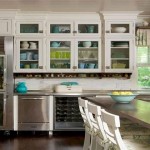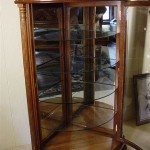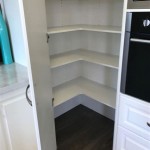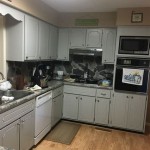Do I Need to Prime Kitchen Cabinets Before Painting?
Painting kitchen cabinets is a popular and relatively cost-effective way to refresh the appearance of a kitchen without undertaking a full remodel. However, achieving a professional and durable finish requires careful preparation, and a crucial step in that process is determining whether or not to prime the cabinets before applying paint. The answer to the question of whether priming is necessary isn’t a simple yes or no; it depends on several factors related to the cabinet material, the existing finish, and the desired outcome.
Skipping the priming stage might seem like a way to save time and money, but it can often lead to unsatisfactory results, including poor adhesion, uneven color, and premature chipping or peeling. Conversely, unnecessary priming adds extra time and cost to the project. Therefore, understanding the role of primer and the circumstances that necessitate its use is essential for a successful kitchen cabinet painting project.
The Functions of Primer
Primer serves several important functions, contributing significantly to the overall quality and longevity of a paint job. These functions can be broadly categorized into adhesion promotion, stain blocking, surface sealing, and color uniformity.
Adhesion Promotion: One of the primary purposes of primer is to create a strong bond between the cabinet surface and the paint. Many cabinet materials, such as laminate, melamine, or glossy factory finishes, have surfaces that are inherently difficult for paint to adhere to directly. Primer acts as an intermediary layer, providing a surface that the paint can grip onto effectively. Without a proper primer, the paint may not adhere well, leading to chipping, peeling, or blistering, especially in high-use areas like kitchen cabinets.
Different types of primers are formulated for specific surfaces. For instance, bonding primers are designed to adhere to slick surfaces like laminate and melamine, while oil-based primers can be effective on wood. Choosing the right primer for the cabinet material is crucial for ensuring optimal adhesion.
Stain Blocking: Kitchen cabinets are often exposed to spills, grease, and other contaminants that can penetrate the existing finish and potentially bleed through the new paint layer. Primer acts as a barrier, preventing these stains from migrating to the surface and discoloring the paint. This is particularly important when painting cabinets with a dark-colored stain or those that have been exposed to grease or smoke.
Stain-blocking primers are specifically formulated with ingredients that encapsulate stains and prevent them from bleeding through. These primers are often oil-based or shellac-based, as these formulations tend to be more effective at blocking stubborn stains compared to water-based primers. For cabinets with significant staining, multiple coats of stain-blocking primer may be necessary.
Surface Sealing: Porous cabinet materials, such as raw wood or MDF (Medium Density Fiberboard), tend to absorb paint unevenly. This can result in an inconsistent finish with variations in color and sheen. Primer seals the surface, creating a uniform layer that prevents excessive paint absorption and ensures a smooth, even finish.
When painting raw wood or MDF, it is essential to apply several coats of primer to fully seal the surface. This will prevent the wood from soaking up the paint like a sponge, which would require multiple coats of paint to achieve adequate coverage and color saturation. A well-sealed surface also contributes to better paint durability, as the paint film is less likely to crack or peel due to moisture absorption.
Color Uniformity: If the existing cabinet color is significantly different from the desired paint color, primer can help to create a uniform base and prevent the old color from showing through. This is particularly important when painting light colors over dark colors, as the underlying color can often bleed through multiple coats of paint. A tinted primer, matched to the approximate color of the topcoat, can further enhance color uniformity and reduce the number of paint coats required.
Factors Determining the Need for Primer
Several factors influence the decision of whether or not to prime kitchen cabinets before painting. These factors include the cabinet material, the existing finish, the color change, and the type of paint being used.
Cabinet Material: The type of material the cabinets are made from is a primary determinant. Solid wood cabinets, particularly those with an open grain, generally benefit from priming to seal the surface and ensure uniform paint absorption. MDF cabinets also require priming, as MDF is highly porous and absorbs paint readily. Laminate and melamine cabinets, on the other hand, have smooth, non-porous surfaces that require a bonding primer to promote adhesion.
Cabinets made from different materials will require different types of primers. For example, an oil-based primer may be suitable for wood, while an acrylic-latex primer may be better for MDF. Laminate and melamine cabinets require specialized bonding primers that are designed to adhere to slick, non-porous surfaces.
Existing Finish: The condition and type of the existing finish on the cabinets play a significant role. If the existing finish is glossy, peeling, or heavily damaged, priming is generally recommended to create a smooth, stable base for the new paint. Glossy finishes need to be dulled and primed to ensure proper adhesion. Peeling or damaged finishes should be thoroughly repaired and primed to prevent further issues.
Cabinets with a sound, matte finish may not always require priming, particularly if the new paint is similar in color and the existing finish is compatible with the new paint. However, even in these cases, a light coat of primer can provide an added layer of insurance and improve the overall durability of the paint job.
Color Change: The extent of the color change is another important consideration. When painting light colors over dark colors, priming is almost always necessary to prevent the old color from bleeding through and affecting the final result. Primer helps to create a neutral base that ensures the new color is true and vibrant. For subtle color changes, priming may not be strictly necessary, but it can still improve the uniformity and coverage of the paint.
Using a tinted primer that is close to the color of the new paint can further enhance color uniformity and reduce the number of coats of paint required. This is particularly helpful when painting bright or light colors, as these colors tend to be less opaque and may require multiple coats to achieve full coverage.
Type of Paint: The type of paint being used can also influence the decision to prime. Some paints, particularly self-priming paints, claim to provide adequate adhesion and coverage without the need for a separate primer. However, even with self-priming paints, priming may still be beneficial in certain situations, such as when painting over glossy surfaces or making significant color changes. It is always advisable to consult the paint manufacturer's recommendations and consider the specific characteristics of the cabinets when deciding whether or not to prime.
Consequences of Skipping Primer When Necessary
Failing to prime kitchen cabinets when it is required can lead to several undesirable outcomes that compromise the quality and longevity of the paint job. These consequences can range from cosmetic imperfections to significant adhesion issues that require extensive repairs.
Poor Adhesion: The most common consequence of skipping primer on slick surfaces is poor adhesion. The paint may not bond properly to the cabinet material, leading to chipping, peeling, or blistering. This is particularly problematic in high-use areas, such as around handles and edges, where the paint is more susceptible to wear and tear.
Poor adhesion can necessitate a complete redo of the paint job. This involves stripping the existing paint, properly preparing the surface, and applying a primer before repainting. The cost and effort associated with this process can be significantly higher than the cost of priming in the first place.
Uneven Color: Without primer, the paint may be absorbed unevenly into the cabinet material, resulting in variations in color and sheen. This is particularly noticeable on porous surfaces like raw wood or MDF, where the paint tends to soak into the material in some areas more than others. The result is an inconsistent and unprofessional-looking finish.
Uneven color can be difficult to correct without priming. Applying additional coats of paint may help to even out the color in some areas, but it can also lead to an overly thick paint film that is prone to cracking and peeling. The best solution is to apply a primer that seals the surface and provides a uniform base for the paint.
Stain Bleed-Through: If the cabinets have existing stains or have been exposed to grease or other contaminants, skipping primer can allow these stains to bleed through the new paint layer. This can result in unsightly discoloration and require multiple coats of paint to cover up. In some cases, the stains may continue to bleed through even after several coats of paint, necessitating the use of a stain-blocking primer.
Stain bleed-through can be particularly frustrating, as it can ruin an otherwise well-executed paint job. To prevent this from happening, it is essential to thoroughly clean the cabinets and apply a stain-blocking primer before painting.
Increased Paint Consumption: Porous surfaces absorb more paint than sealed surfaces. Therefore, if cabinets are not primed, more coats of paint are required to achieve the desired color and coverage. This translates to higher paint costs and increased labor time.
By priming the cabinets, the surface is sealed, significantly reducing paint absorption and saving money. The primer provides a smooth, even surface for the paint to adhere to, resulting in better coverage with fewer coats.
In conclusion, it is generally prudent to prime kitchen cabinets before painting to achieve a professional and durable finish. This decision should be based on careful consideration of the cabinet material, existing finish, color change, and type of paint being used. While there may be instances where priming is not strictly necessary, the benefits of priming in terms of adhesion, stain blocking, surface sealing, and color uniformity often outweigh the extra time and cost involved. Failing to prime when necessary can lead to poor adhesion, uneven color, stain bleed-through, and increased paint consumption, all of which can compromise the quality and longevity of the paint job.

Refinish Kitchen Cabinets With Kilz Restoration Primer

How To Paint Kitchen Cabinets A Step By Guide Confessions Of Serial Do It Yourselfer

How To Prime Cabinets For A Smooth Finish The Turquoise Home

What You Need To Know Before Painting Cabinets The Palette Muse

Tips Tricks For Painting Oak Cabinets Evolution Of Style

Do I Need A Primer For Kitchen Cabinets 518 Painters

Painting Kitchen Cabinets Without Primer

How To Prime Cabinets For A Smooth Finish The Turquoise Home

How To Paint Kitchen Cabinets A Step By Guide Confessions Of Serial Do It Yourselfer

How To Paint Kitchen Cabinets Without Sanding Or Priming
Related Posts








